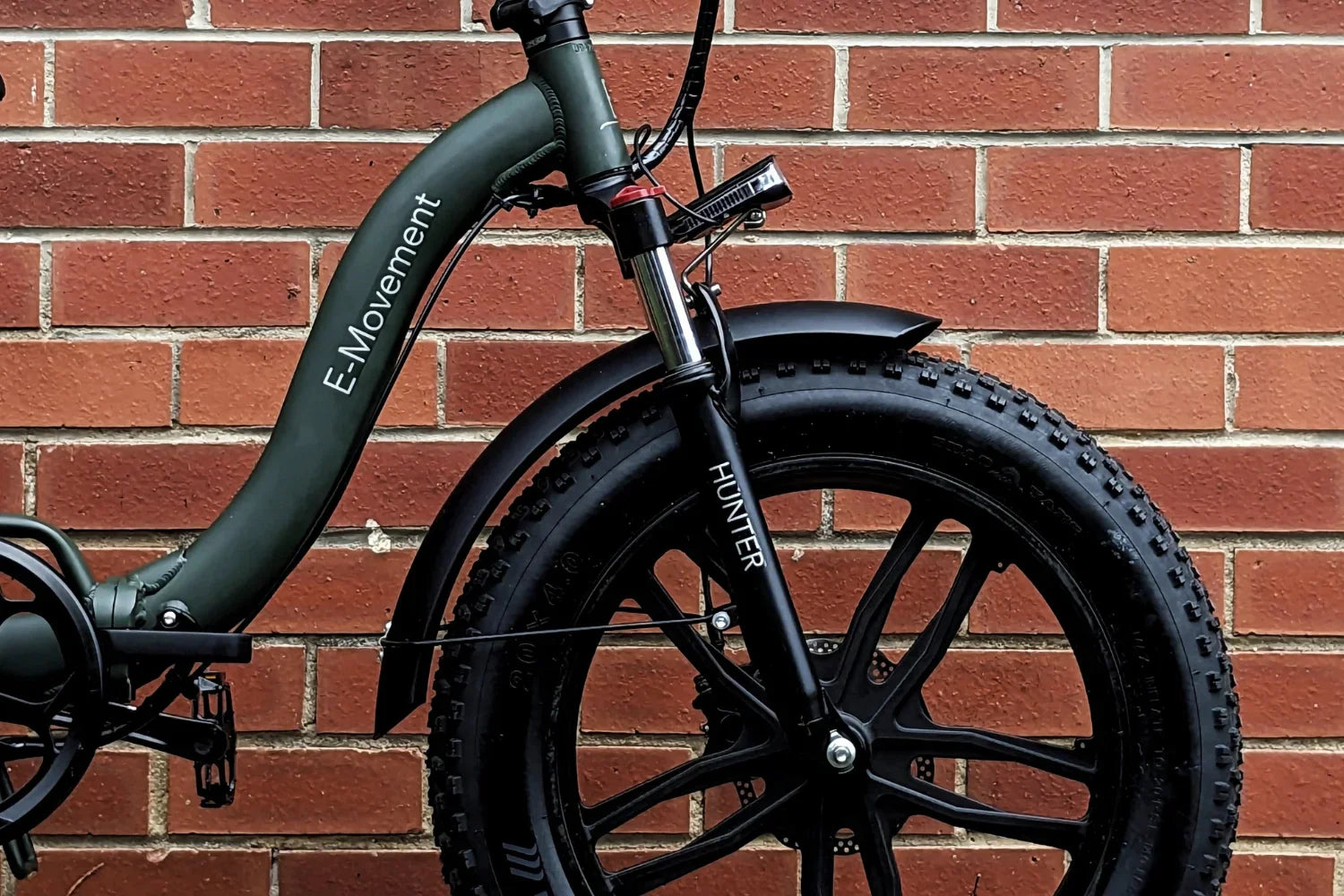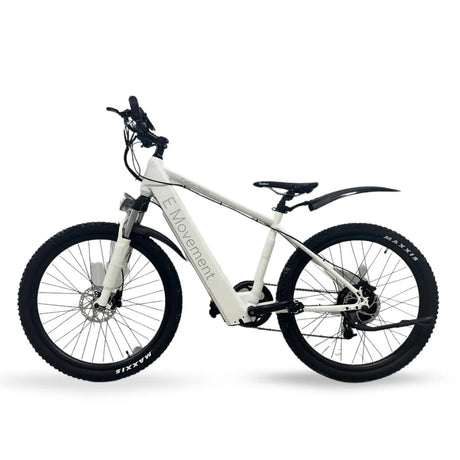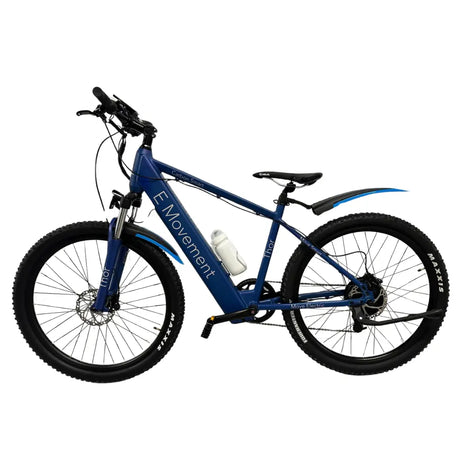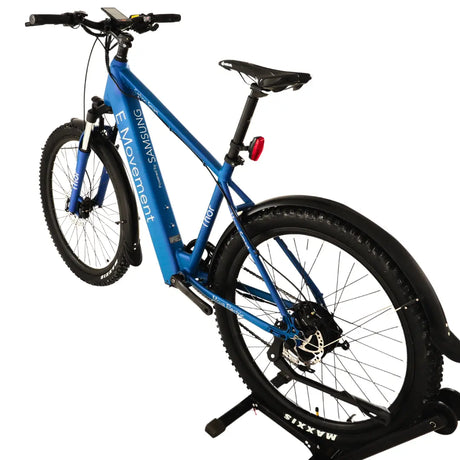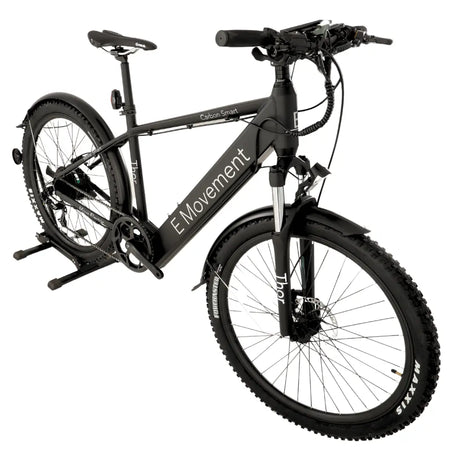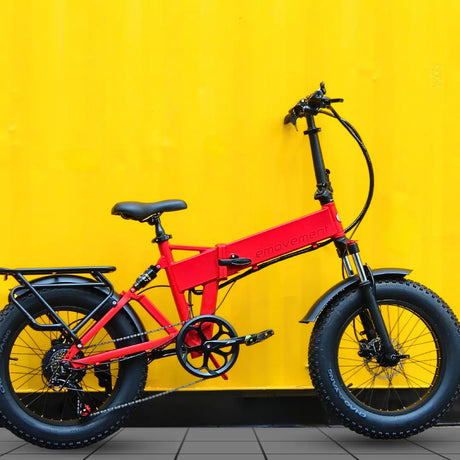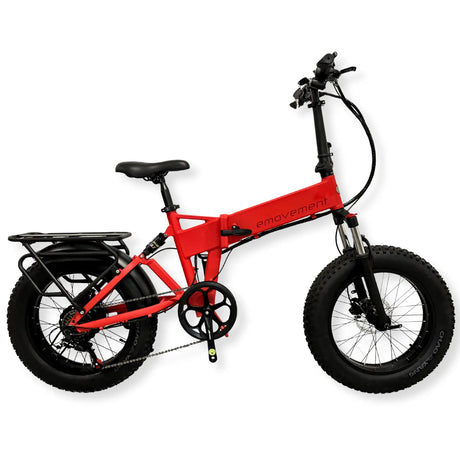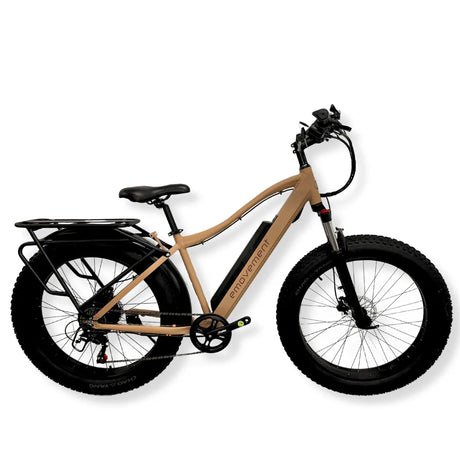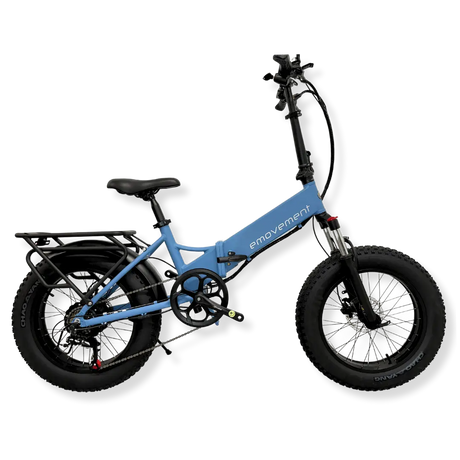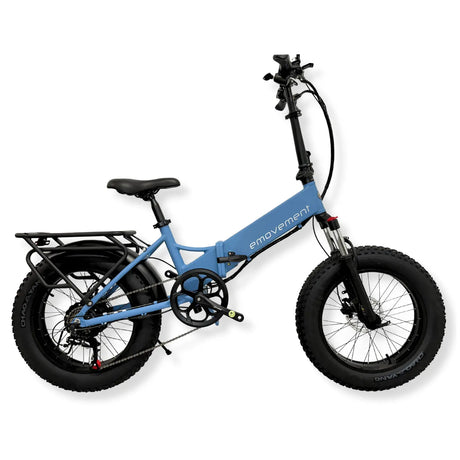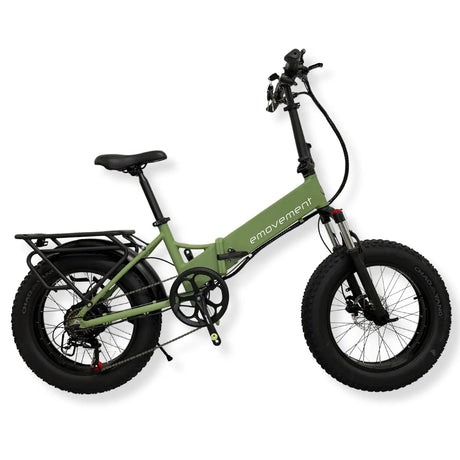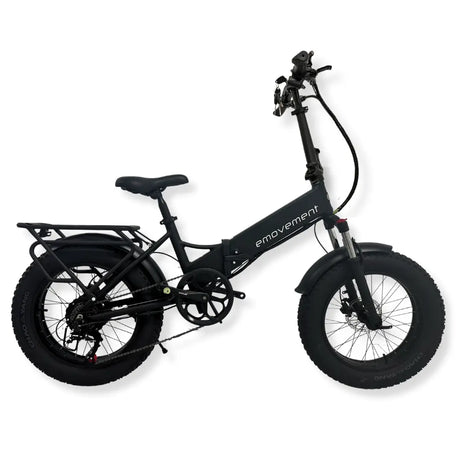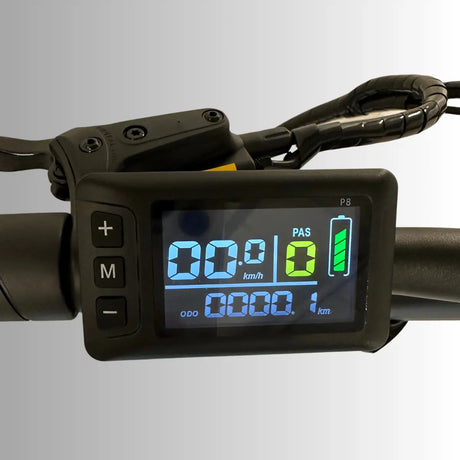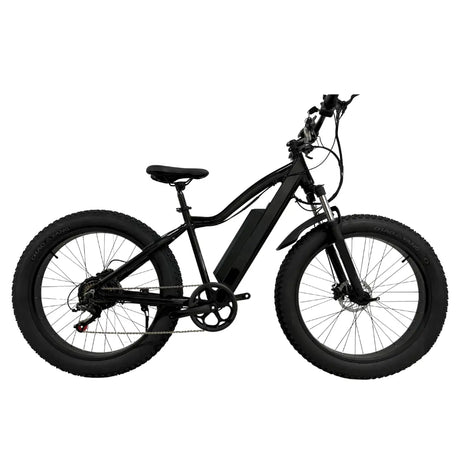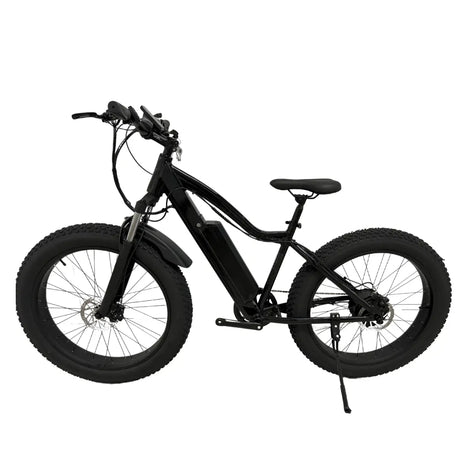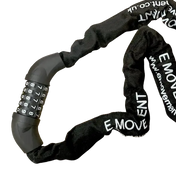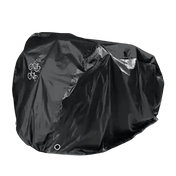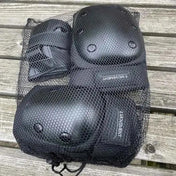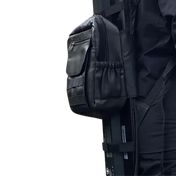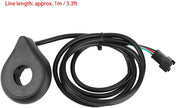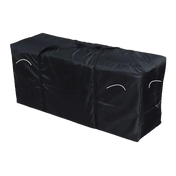Inside this Article:
- Why This Comparison Matters
- Key Differences Between Hardtail and Full Suspension eBikes
- 1. Suspension System
- 2. Cost and Value
- 3. Maintenance
- 4. Handling and Control
- 5. Speed and Efficiency
- 6. Comfort and Ride Quality
- Usage Scenarios
- Pros and Cons of Hardtail vs Full Suspension eBikes
- Buying Guide
- Conclusion
- FAQs
- 1. What are the main differences between hardtail and full-suspension eBikes?
- 2. Which type of e-bike is better for beginners?
- 3. How much maintenance do full suspension eBikes require?
- 4. Are hardtail ebikes more affordable than full-suspension ebikes?
- 5. Can you use a full suspension eBike for commuting?
- 6. Is hardtail better than full-suspension eMTB?
- 7. Is a full-suspension eBike worth it?
- 8. What are the disadvantages of a full-suspension bike?
Among the various electric bike options available, hardtail and full-suspension ebikes stand out for their comfortable rides, as opposed to their rigid counterparts. Understanding the differences between these two types can help riders make informed choices, enhancing their biking experience.
In this guide, we’ll go through the design, performance, maintenance, and usage of hardtail and full-suspension electric bicycles. Here we discuss all the necessary details so you can purchase your first or next electric bike with confidence.
Why This Comparison Matters
Choosing between a hardtail vs full-suspension electric bikes significantly impacts your riding experience. Hardtail e-bikes feature a relatively rigid frame with a shock-absorbing suspension in the front fork, while full suspension pedelecs include both front and rear suspension systems. You must consider your typical terrain, desired comfort level, and maintenance capabilities before deciding which model will best suit your specific needs. This comparison highlights the core aspects, aiding you in selecting an electric bicycle that aligns with your specific needs and preferences.
Key Differences Between Hardtail and Full Suspension eBikes
Understanding the fundamental differences between a hardtail and full-suspension pedelec helps you choose the right model for you. Here’s a comparison of their suspension systems, weight, and frame construction.
1. Suspension System
The primary difference between hardtail and full-suspension electric bicycles lies in their suspension systems. Hardtail e-bikes feature a front suspension fork, which absorbs shocks from the front wheel whereas full-suspension e-bicycles have both front and rear suspension systems .
The hardtail setup works well on smoother terrains, providing sufficient comfort without adding much weight. On the other hand, the dual suspension setup absorbs shocks from both wheels, making it ideal for more challenging trails and technical rides. You can even use full suspension ebikes on roads for the smoothest rides.
2. Cost and Value
Electric bikes’ costs can widely differ, and the type of suspension plays a major role. Hardtail ebikes generally fall into a more affordable price range, offering excellent value for money, particularly for casual riders and those on a budget. While, full-suspension pedelecs are more expensive, due to their advanced suspension systems and complex frame designs. However, they justify the extra cost by providing better performance and comfort on rough terrains, which is often critical for riding enthusiasts. Before purchasing an e-bike, it is critical to evaluate your specific needs and budget to help determine which type offers the best value for you.
3. Maintenance
Maintenance for hardtail electric bikes is generally more straightforward due to their simpler design and fewer moving parts. Routine maintenance involves checking and servicing the front suspension, drivetrain, and brakes. The rigid frame tends to be more durable and less prone to wear and tear. Riders can expect long-lasting performance with regular upkeep. Hardtail pedelecs typically have a longer lifespan due to their robust construction, making them a cost-effective option in the long run.
Maintaining a full-suspension e-bike requires more attention due to its complex design. The front and rear suspension systems need regular inspection and servicing to ensure optimal performance. Riders must check for wear and tear on the suspension components, pivots, and bearings. These models’ durability can be excellent with proper care, but neglecting maintenance may result in quicker wear.
Consider getting regular servicing by professionals to ensure longevity and consistent performance.
4. Handling and Control
Handling and control are crucial factors in choosing an electric bicycle. Hardtail e-bikes offer excellent stability on smoother terrains and are easier to manoeuvre in tight spaces, making them ideal for urban commuting and light trail riding. However, they lack control over rough and technical terrains. In contrast, full-suspension ebikes are great for handling and controlling on challenging trails. The rear suspension provides better traction and stability, allowing you to make confident turns and enjoy smooth rides over obstacles. This makes them perfect for mountain biking and off-road adventures.
5. Speed and Efficiency
Speed and efficiency are influenced by the bike’s design and weight. Hardtail e-bicycles are lighter, providing better acceleration and higher top speeds on flat and uphill sections. Their rigid frame ensures efficient energy transfer from the rider to the wheels. On the other hand, full-suspension e-bikes are heavier, offering improved control and stability at higher speeds on rough terrains. While they may not accelerate as quickly as hardtails on smooth surfaces, their superior traction and shock absorption allow consistent speed maintenance on challenging trails.
Also note that hardtail ebikes consume less battery power than their full-sus counterparts, providing a longer range.
6. Comfort and Ride Quality
Comfort and ride quality are essential for an enjoyable biking experience. Hardtail electric bikes provide a comfortable ride on smooth terrains but can be uncomfortable on rough surfaces. They make feel more impact and vibrations due to the lack of rear suspension. Full-suspension e-bikes have dual suspension systems, providing riders with superior comfort. These bikes absorb shocks from both wheels, reducing rider fatigue and ensuring a smoother ride. The enhanced comfort and better riding posture make full-suspension eBikes the preferred choice for long challenging rides.
Usage Scenarios
To understand which e-bicycle is ideal, consider the bicycle’s usage. Here we have applied different scenarios to hardtail and full-suspension electric bikes so you can make an informed decision on which one best fits your needs.
For Hardtail Electric Bikes
Hardtail electric bicycles are perfect for urban commuting and cross-country trails. Their lightweight design and efficient energy transfer make them ideal for navigating city streets, bike paths, and light trails . They provide the necessary comfort for daily commuting while being easy to maintain and cost-effective. Hardtails also perform well on cross-country trails, offering a balance of speed and control on less technical terrains. Riders looking for a versatile, reliable bike for everyday use will find hardtail bikes ideal.
For Full Suspension Electric Bikes
Full-suspension e-bikes excel in mountain biking and off-road adventures. Their advanced suspension systems provide superior traction, control, and comfort on rough and technical terrains. Mountain bikers especially benefit from the bike’s ability to easily handle steep descents, rocky paths, and unpredictable surfaces. While off-road enthusiasts enjoy the bicycle’s smoother ride and less energy requirement during challenging rides. Full-suspension pedelecs are the go-to option for those seeking adventure and performance in their biking experience, especially on demanding trails. However, you can easily use them on roads too, especially if your area has rough, pot-hole-ridden paths.
Pros and Cons of Hardtail vs Full Suspension eBikes
Here is a brief look into the pros and cons of hardtail and full-suspension pedelecs.
Hardtail e-Bikes
Hardtail e-bikes offer simplicity and cost benefits. Their straightforward design makes them easier to maintain and repair. Riders enjoy better pedalling efficiency due to the rigid frame, which translates to faster speeds on smooth terrains. Hardtails are typically more affordable, providing excellent value for money. They consume battery power more efficiently, saving charging costs.
However, hardtail electric bicycles have limitations in comfort and performance on rough terrains. The lack of rear suspension means riders feel more bumps and impacts, which leads to discomfort on longer rides. Hardtails also struggle with traction and control on technical trails.
Full Suspension e-Bikes
Full-suspension electric bikes provide enhanced comfort and control. The dual suspension system absorbs shocks from both wheels, ensuring a smooth ride on rough terrains. Riders benefit from better traction and stability, making these bikes ideal for challenging trails and technical rides.
The main drawbacks of full-suspension pedelecs include higher costs and increased maintenance requirements. Their complex design involves more components that need regular servicing. Full suspension models may also be heavier, which impacts handling and efficiency on smooth surfaces and climbs. Their battery consumption is also considerable.
Buying Guide
Before you go and buy a hardtail or full-suspension electric bike it is important to consider some of the following factors and pay attention to these test riding tips.
Factors to Consider When Making Your Purchase
When choosing an e-bike, start by determining your budget. Hardtail e-bikes are more affordable, ranging from £1,000 to £2,500, while full suspension models can cost between £1,500 and over £6,000 due to their advanced technology.
Next, consider your intended use. Hardtail pedelecs are ideal for urban commuting and light trails, while full suspension eBikes excel on rougher roads, mountain biking and off-road adventures.
Your experience level also plays a critical role. For beginners, the simplicity of hardtails makes it easy to navigate, whereas experienced riders prefer the advanced capabilities of full-suspension electric bikes.
Test Riding Tips
When on a test ride , focus on comfort, handling, and fit. Ensure the bike matches your riding style and feels comfortable. Test the suspension performance, especially on full-suspension models, and check the responsiveness of brakes and gear shifting.
You should also consider riding on different terrains to evaluate the bike’s capabilities, particularly on your usual routes. For urban riding, test on city streets and bike paths; for mountain biking, try technical trails. Observe how the e-bike handles climbs, descents, and turns. Finally, you must test the battery life to understand its range and determine if it is ideal for long or short travel distances.
Conclusion
Selecting the right electric bike, whether hardtail or full suspension, depends on your specific needs, budget, and riding preferences. Hardtail bikes are ideal for urban commuting and smoother terrains, offering simplicity, lower costs, and ease of maintenance. Full-suspension eBikes provide superior comfort, control, and performance on rough and technical terrains, making them perfect for mountain biking and off-road adventures. By understanding the key differences in design, performance, and maintenance, you can make an informed decision and choose an eBike that will enhance your riding experience and meet your unique requirements.
If you’re unsure of which bike to buy, you can book a free test ride with us !
FAQs
1. What are the main differences between hardtail and full-suspension eBikes?
Hardtail electric bikes have a rigid frame with suspension only in the front fork, offering simplicity, lower weight, and better efficiency on smooth terrains. Full suspension e-bikes feature both front and rear suspension, providing superior comfort, traction, and control on rough terrains but at a higher weight and cost.
2. Which type of e-bike is better for beginners?
Hardtail bikes are better for beginners due to their simpler design, lighter weight, and lower cost. They are also easier to handle and maintain. The straightforward mechanics of a hardtail reduce the likelihood of mechanical issues and provide an easier learning curve.
3. How much maintenance do full suspension eBikes require?
Generally, full-suspension e-bicycles require some more maintenance than hardtails. You must regularly inspect and service both suspension systems, pivots, and bearings to ensure optimal performance and longevity. We recommend occasional professional servicing for issues that may not be apparent but can cause serious damage.
4. Are hardtail ebikes more affordable than full-suspension ebikes?
Typically, hardtail pedelecs are slightly more affordable than full-suspension models. Their simpler design, with only a front suspension fork, reduces manufacturing and maintenance costs. Hardtail eBikes typically range from £1,000 to £2,500, making them accessible for budget-conscious riders or those new to electric biking.
5. Can you use a full suspension eBike for commuting?
Generally, full-suspension electric bikes make for excellent commuters, especially if your area’s roads are riddled with potholes. While they are heavier and more costly, they offer a smoother ride on rough urban roads and can handle potholes, curbs, and uneven surfaces more effectively than hardtail models. However, for smooth city streets, the added suspension might be unnecessary and could reduce efficiency.
6. Is hardtail better than full-suspension eMTB?
A hardtail eMTB is better suited for smoother trails, efficiency, range, and budget-conscious riders. They are lighter, easier to maintain, and less expensive. Hardtails offer excellent pedalling efficiency and are ideal for cross-country riding or light trail use. Full-suspension eMTBs, however, excel on rough, technical terrains by providing superior comfort and control.
7. Is a full-suspension eBike worth it?
A full-suspension e-bike is worth it if you frequently ride on rough, technical trails. The enhanced comfort, traction, and control significantly improve the riding experience on challenging terrains, reducing fatigue and increasing stability. The dual suspension system absorbs shocks from both wheels, allowing for smoother descents and better handling of obstacles. However, they come at a higher cost and require more maintenance, but the benefits in performance and comfort can justify the investment for serious mountain bikers and off-road enthusiasts.
8. What are the disadvantages of a full-suspension bike?
The disadvantages of a full suspension bike include higher cost, increased battery consumption, increased weight, and more complex maintenance. The dual suspension system adds to the overall weight, making the bike less efficient on smooth surfaces and climbs. Maintenance involves regular checks and servicing of the front and rear suspension components, which can be time-consuming and costly. Full-suspension bikes are also a bit more expensive to purchase due to their advanced design and materials.

